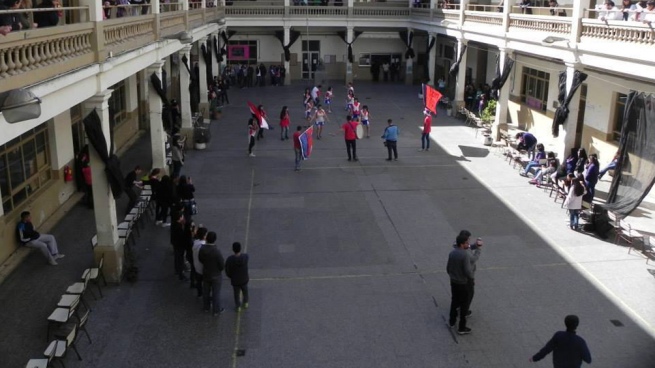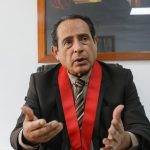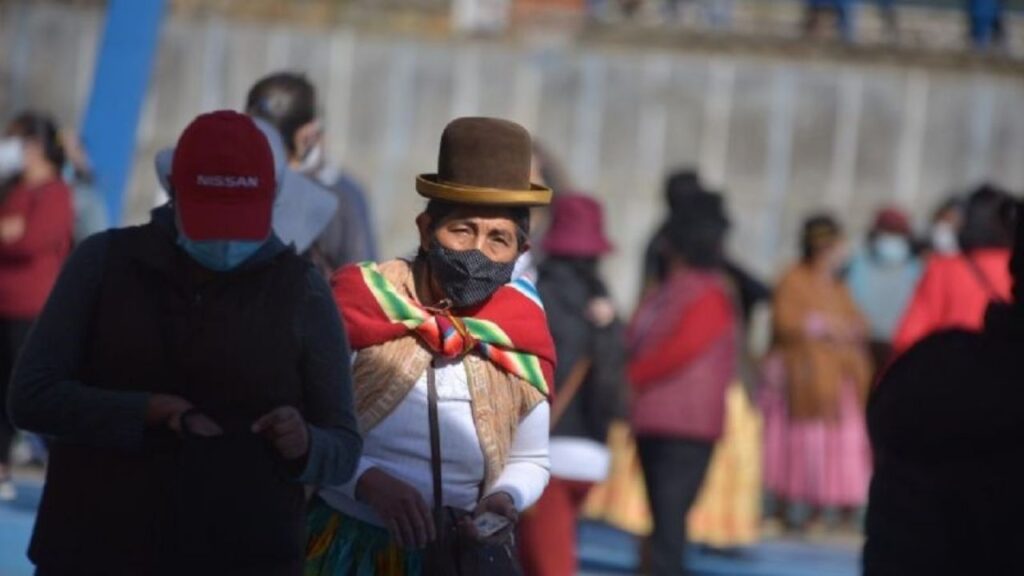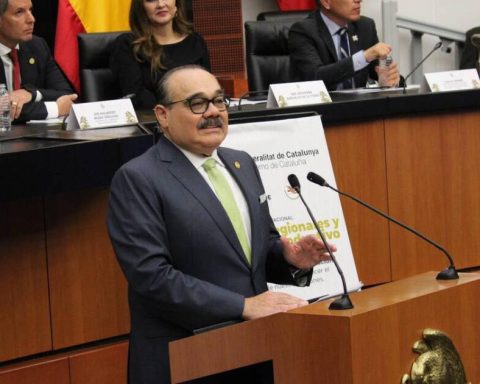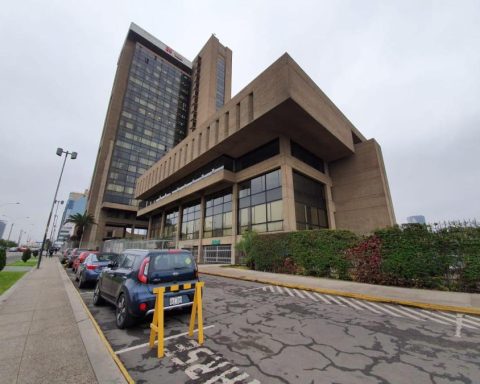More than six years ago, the history teacher Luciana Oddi, together with her then colleague Carlos Gamboa, thought about how to help the students of Colegio No. 2 Domingo Faustino Sarmiento, in the city of Buenos Aires, who were dropping out of high school or were at risk of doing so. They never imagined the importance that this project would eventually acquire.
“Territorial Intervention Tutorials” Since 2016, not only has it become a tool to support night shift enrollment, but with the arrival of the pandemic it would take on a key weight: many of the students came from a situation of high social vulnerability and had completely “disconnected” from the college.
The school is in the Buenos Aires neighborhood of Recoleta, on Libertad Street between Juncal and Arenales, but being close to Retiro, 70% of girls and boys from Barrio Mugica attend.

Oddi remembers how difficult the last two years were. “There were a lot of factors that drove the kids away,” he says. Among the main reasons, he lists the lack of connectivity, since most had “only one cell phone for the whole family” and did not have a good Internet signal; the need to assume adult roles –such as working or caring for siblings or children–; the difficulty of studying alone and low self-esteem, which increased “with the anguish and depression” experienced by many young people and adolescents. When returning to face-to-face in 2021, many classroom benches were still empty and then they went looking for the students from house to house. “Totally ad honorem and without resources,” she clarifies.
“When they attended us, they or the parents, some told us that they were not coming back because they had missed the year or did not know how to take so many subjects”, details the teacher. Others were completely discouraged. What did you do? They explained to them that they could return, that they were going to help them perform or that they could directly sign up for the following year. “If a curricular continuity of that cycle cannot be achieved, enrollment is worked on because what we want is for them to stay in school,” she explains.
Promote school reintegrationas well as strengthening the bond of the institution with their families and the community, is the objective of “Territorial Intervention Tutorials” since it began. In addition to the “door to door” that they do on Saturdays, they adapt the contents so that the students can “really” return, and help them reinforce their knowledge with extra classes.

“Before we had El Galpón, a space under the highway, but since it is very deteriorated, in December the cultural center La Escuelita lent us its facilities in the neighborhood”, says Oddi, and immediately expresses how proud she is that several students have managed to pass up to five subjects in a week. “Especially one – she details and gets emotional – that he had been homeless for a few months and, despite everything that happened to him, the year ended.”
Examples that go against the sayings of the Buenos Aires Minister of Education, Soledad Acuñawho in January argued that the students who stopped having contact with the school due to the pandemic “surely they are already lost in the corridor of a villa or they fell into drug trafficking activities.”
The following days, tutors will start “flying and buzzing” for the afternoon shift and, above all, at night. And in March, they will go out through the neighborhood in search of the undecided. “In the flyers we tell them: ‘The school is already working, we are waiting for you. Come, we want to know your story’. Because they are always stories, it is not a course. They are Leandro, Martin, Maria, Manuel, Ana… And when they say ‘I can’t’, ‘I don’t know’, we tell them: ‘You’re going to be able to’”Oddi recounts.

The proposal of the tutorials is precisely to put together a singular educational trajectory, which takes into account the personal and work situation, even if they are longer. The history teacher remembers that when they started with the project they noticed that young people stopped going to school in winter. Upon arriving at the houses, they realized that the cold was lived in another way in the ranches or that many single mothers had no one to leave their babies with.
“We have six years of recorded visits. The impact is great. Our great challenge is to continue achieving ways of the future through public education, revaluing its transforming role”, emphasizes Oddi.
For her, school is a very powerful place of belonging for these young people “that they are in training and what they have to be able to do is dream of a better life, whatever they want to do, but better than the one they have”. In this sense, he considers that public education offers this possibility, “because it generates ruptures, discussions, makes you question yourself”, and that “at a time when the social fabric is very broken, you have to be more than ever”.
For this reason, when they go out to look for the students at their homes, the first thing they tell them is “we care about you”.
Pandemic and school dropout in CABA: the figures of discord
In mid-August 2020, the Buenos Aires government had said that 6,500 boys and girls had no contact with the school. At that time, the National State offered to grant netbooks with an Internet connection and accompany these students through socio-educational promoters, but the information was never delivered.
According to the City Ministry of Education, They went looking for these students house by house, and in 2021, at the beginning of classes, “there were 440 boys left to reconnect”of which, indicate from the portfolio headed by Soledad Acuña, “there are 96 in a situation of violation of rights” to those who accompany from different Buenos Aires organizations.
However, teachers, unions and civil society organizations say that it is impossible to verify this data since they do not share this information. Added to this is the fact that some of Acuña’s statements (such as “it’s too late” to look for the children who dropped out of school) cast doubts in many sectors about the results of the Say Present Programwith which the Buenos Aires macrismo claims to have recovered 98% of the boys who had lost ties with their school during the first year of the pandemic.
In this sense, last October, the Civil Association for Equality and Justice (ACIJ) made a request for Access to Public Information to find out how many children and adolescents had dropped out of school during 2020 and 2021among other indicators that could account for the impact on school trajectories in the context of the health emergency caused by Covid-19.
As the Ministry of Education of Buenos Aires did not provide this data, on January 19, 2022, the Guarantor Body of the Right of Access to Information of the City Acuña was ordered to deliver, within 10 working days, 6 of the 7 points required. Once that period has expired, the educational portfolio still does not provide the requested information, so ACIJ told Télam that they will initiate legal action. The NGO also requested similar data from the National State and the provinces of Buenos Aires and Salta, without having obtained what was required so far.
“The situation of children and adolescents who dropped out of school or are at risk of doing so still very worrying. The publication of educational statistics data is essential so that society as a whole can monitor the actions of the State”, says Bárbara Zanino, from the ACIJ Social Rights of Children program.
For his part, the general secretary of the CTA of the city of Buenos Aires and leader of the Union of Education Workers (UTE), Eduardo López, considers that the numbers shown by the Buenos Aires Executive Power are always “very opaque” and that it is not known with certainty how many children are away from school or, for example, how many did not get enrolled, except for the estimates of unions or organizations. For López, “the lack of access to these data is related to the lack of transparency, a product of the political slack that the PRO has in the City, the media shield and judicial complicity, and an absolute majority in the Legislature.”
